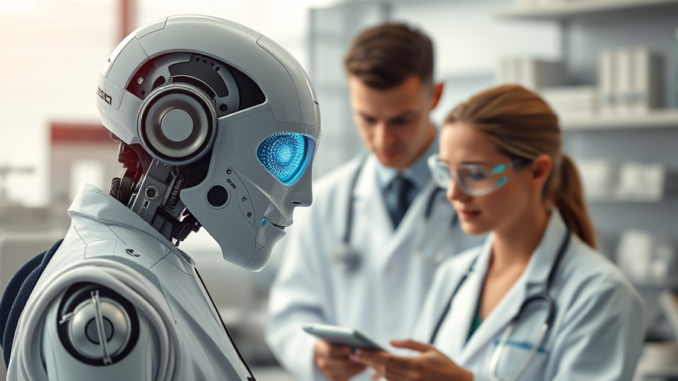
Summary
Two recent studies reveal how generative AI foundation models can significantly accelerate scientific discovery of new materials and enhance medical care by enabling doctors to access and analyze radiology results faster. These advancements, driven by collaborations between Microsoft, academia, and the private sector, highlight the potential of AI to address humanity’s most pressing challenges. The models were built using Microsoft Azure and have been made public to expedite further development and usage.
Main Story
Okay, so you’ve probably seen AI popping up everywhere, right? From suggesting your next binge-watch to automating tedious tasks, it’s become pretty mainstream. But, it’s also making waves in the areas you might not immediately think of, like healthcare and scientific research. I mean, we’re talking about potentially game-changing stuff. Two recent studies published in Nature and Nature Machine Intelligence, really highlight how powerful generative AI is becoming.
First off, let’s talk materials discovery. For years, discovering new materials has been like trying to find a specific grain of sand on a beach – time-consuming, expensive, and honestly, pretty frustrating. It’s a process of sifting through millions of possibilities, often with little to show for it. And, frankly, that process can take years. But, what if AI could change that? Well, with MatterGen, it might just be doing that. This AI model, developed by Microsoft and its partners, can actually ‘learn’ the language of nature, things like molecules and crystals. Because of this, it can predict and even design new materials with specific properties. Just think about the possibilities! This is not just about cutting costs and speeding things up; it’s about drastically increasing the odds of finding groundbreaking new materials that we never thought possible. It’s like giving scientists a turbo boost to their research. For example, a colleague was telling me about his project last month that took 6 months to achieve a very small result, what if he could’ve used this AI instead?
On the other hand, we have the medical field, where AI is becoming an invaluable tool, especially in radiology. Radiologists are faced with analyzing incredibly complex images to diagnose disease and guide patient treatment. The volume of images is insane and the intricate detail involved is intense, and sometimes, things get missed, which is only human, right? But, with AI-powered tools, some of that pressure can be relieved. These tools can quickly scan images, spotting patterns and anomalies that might be easily overlooked. Imagine a doctor with AI assistance, making faster, more accurate diagnoses, freeing them up to handle more complex cases and actually spend more time with their patients! It’s all about both efficiency and improved patient care, and frankly, that’s something I’m completely on board with. This isn’t about replacing professionals; it’s about empowering them.
Now, these advances aren’t happening in a vacuum. They’re a testament to the power of collaboration. Microsoft, along with various academic institutions and private sector partners, are working together to push the boundaries. What’s even better is that Microsoft is sharing these AI models on Azure, further accelerating the pace of progress. They clearly understand that widespread adoption can lead to even more breakthroughs.
Looking ahead, it’s clear AI’s potential in healthcare and science is truly massive. The fact is, as these AI models get better, they’ll likely play a key role in solving some of humanity’s biggest issues, whether that’s creating sustainable materials or finding new ways to tackle diseases. These recent studies just scratch the surface, they’re a real leap towards a future where AI helps us solve big, complicated problems and improve lives in ways we just wouldn’t have thought possible before. The fact that AI can analyze huge datasets and see patterns that our human eyes can’t, it is changing fields like drug development and personalised medicine. AI-powered diagnosis is also helping doctors catch diseases earlier and with greater precision. It’s a very exciting time, and I’m eager to see what’s next.


So, AI is now fluent in molecule-speak and can predict new materials? Next thing you know, it’ll be designing my perfect cheese toastie – now that’s a research project I can get behind!
That’s a fantastic point about AI designing a perfect cheese toastie! Perhaps we are not that far away. Imagine an AI fine-tuning material properties at the molecular level to create the perfect bread or cheese texture. Maybe we should propose a collaboration?
Editor: MedTechNews.Uk
Thank you to our Sponsor Esdebe – https://esdebe.com
So, AI is fluent in molecule-speak *and* can analyze radiology images, huh? Next it will be doing my taxes and I won’t be able to complain that they are too complicated.